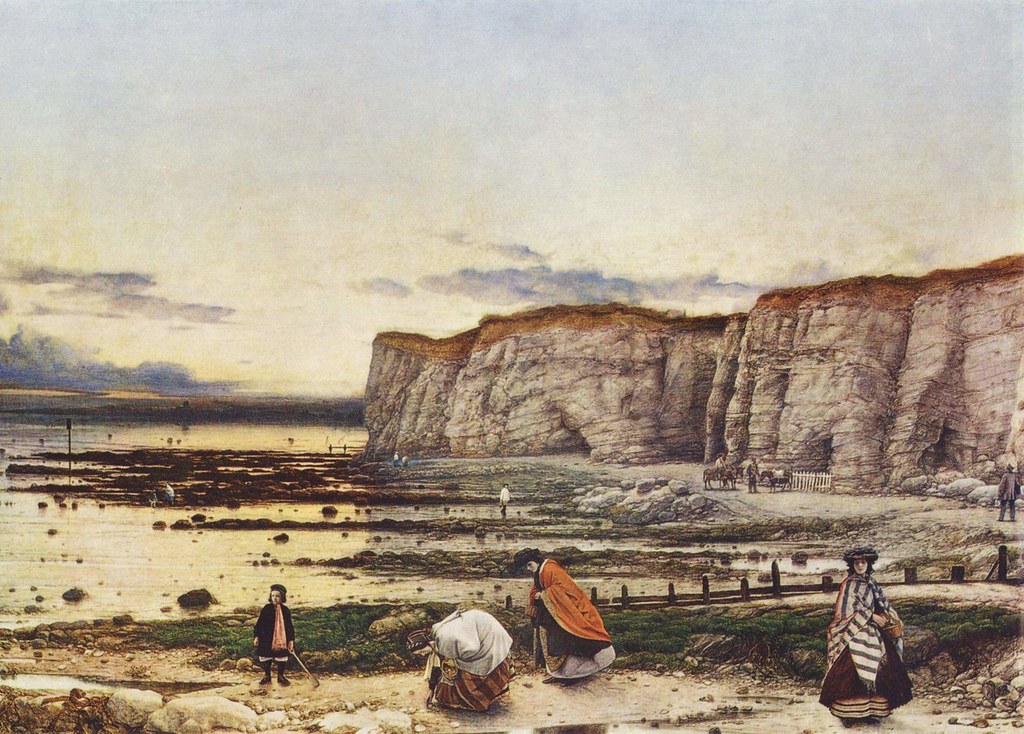
Artists and art historians in the classical tradition like to point out the close relationship that art and science enjoyed from the Renaissance. Mathematical perspective, anatomical study of human and animal figures, geology, and meteorology all played serious roles in the fine arts.
This week the exhibition“Endless Forms: Charles Darwin, Natural Science and the Visual Arts” opens at the Fitzwilliam Museum in Cambridge, England. It features a number of contemporary reactions in the fine arts to the publication of Darwin’s Origin of the Species (1859). One of its most stunning works is by the Pre-Raphaelite painter William Dyce (Scotland, 1806-1864).
Dyce was an ardent Anglican who had painted several religious works. In 1858 he traveled to Southeastern England. There it had become fashionable for professionals and amateurs alike to dig ancient urchins, plants, and brachiopods from the chalk cliffs of Kent. At the time, there was no widely accepted scientific or religious theory to explain the fossils. It was not until one year later that Dawin published his own ideas and ignited a firestorm.
During the firestorm, from 1859 to 1860, Dyce painted Pegwell Bay, Kent – a Recollection of October 5th 1858. The title is a double entendre, referring both to his own memory of the scene and the collective rediscovery of relics from the dinosaur age. At first glance it looks like a typical, nineteenth-century landscape filled with well-bred people. Therein lies one of its great strengths: the commentary that behind something seemingly so ordinary there is a much greater issue at stake.
The painting itself has all the hallmarks of the best Pre-Raphaelite works: brilliant coloring, meticulous detail, careful observation, and poignancy of theme. For me, it is one of the great paintings of the 1850s, and one of the least known.